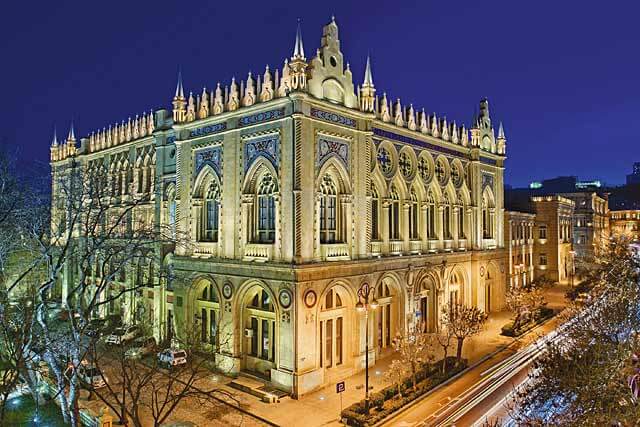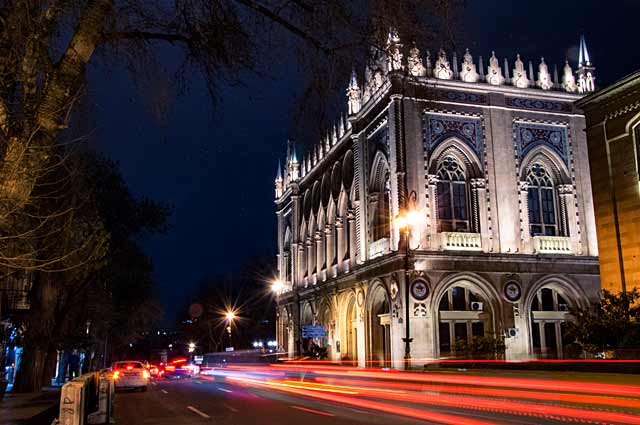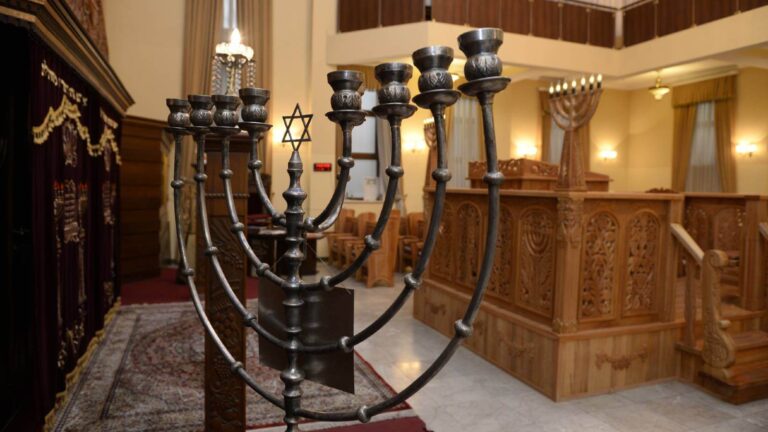Getting There
The best way to reach there will be by metro – Ismailiyya Palace is 2 minutes far from “Icherisheher” metro station. It is located outside of the Old City’s wall, that’s why you can get there by walk, too.
What to Expect
The Ismailiyya Palace is a historical building that currently serves as the Presidium of the Academy of Sciences of Azerbaijan. The building was constructed in the Venetian Gothic style. You will be fascinated by its architecture. Don’t forget to take a picture.
History
The palace was built for the Muslim Charity Society by Polish architect Józef Płoszko, at the expense of the millionaire Musa Naghiyev in commemoration of his deceased son Ismayil and was named Ismailiyya after him. Construction began in 1908 and ended in 1913. While visiting his son Ismail during his treatment in Switzerland, Naghievalways looked at Palazzo Contarini degli Scrigni e Corfu built in Gothic style and had a desire to build a similar structure for his son in Baku.
In 1905, he sent Polish architect Płoszko to that city to prepare the project of the palace in Switzerland in order to build the future Ismailli building. As this process required too much time, the architect had to stay in Switzerland for three years. Płoszko represented the project of the Venetian building to Agha Musa, and on 21 December 1908, the construction of Ismailliya building was initiated at the solemn ceremony of the Imam. This palace began operating on April 7, 1913.
On 1918 Ismailiyya Palace burned and destroyed during the March genocide by Armenian and bolsheviks. After all, those happened to the building, Musa Naghiyev felt sick and passed away in 1919. The building was restored with the participation of Alexander Dubov in 1922-1923 and was renamed into the Turkish Cultural Palace for a while.
Facilities Available
- Restaurants
- Old City
- Institute of Manuscripts
- Home museum of Huseyn Javid
- Sabir Park















